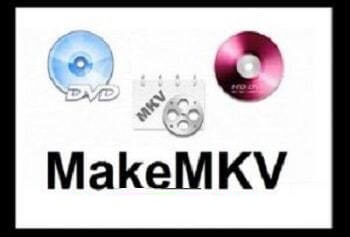

When you have an MKV file, you choose it as a source in HandBrake, and follow the same procedure as with a DVD.
#MAKEMKV CODE HOW TO#
My previous article explains how to rip a DVD with HandBrake.

I won’t go into detail here about how to do this. If you do want to convert your video to an Apple-compatible format that you can add to your iTunes library, play on an Apple TV, and sync to an iOS device, it’s time to use HandBrake. If you click the disclosure triangle next to the disc, you can choose to exclude different parts of a disc, such as the main feature and bonuses, or different episodes for a TV series you can also exclude any audio and subtitle tracks you don’t need. The MakeMKV interface lets you select which elements from a disc you want to rip. MakeMKV will read the disc, then display its contents. Launch MakeMKV, insert a disc in your optical drive, then click the big button that looks like an optical drive.
#MAKEMKV CODE SOFTWARE#
While macOS doesn’t support Blu-ray discs, any software that can read such discs will be able to do so from this drive, or any other. I have long used the Pioneer BDR-XD05B, which is a bus-powered drive (it doesn’t need a separate power supply) that supports USB 3. Psst - if you’re on Windows and macOS you need to check a “VLC integration” option in MakeMKV’s Preferences section, but this isn’t required on Linux.You’ll need an optical drive to rip DVDs, and if you want to rip Blu-rays, you’ll need a Blu-ray drive (which can also rip CDs and DVDs). This will ensure you can continue using the software for the next few months (though you will need to enter a new key at some point).įinally, to enable direct Blu-ray playback in VLC, run: sudo ln -s libmmbd.so.0 /usr/lib/Īnd you’re all set - go grab some popcorn! Insert a Blu-ray, open VLC, and go to “Open Disc…” > Blu-ray > Play. Now open MakeMKV (be aware if you have a disc in your drive when you launch the app it will scan it before you can do anything else) and enter the latest beta key in the ‘register’ box.
#MAKEMKV CODE INSTALL#
I don’t know if the extras are strictly necessary, but they sound relevant, and they don’t take up much room: sudo apt install vlc libbluray2 libaacs0
#MAKEMKV CODE PLUS#
deb, or whatever, just don’t use the sandboxed version from the Snapstore) plus a couple of dependencies. Next, install VLC from the Ubuntu archives (or a. Remember: you CAN compile MakeMKV manually instead – I’m just lazy and trusting! sudo add-apt-repository ppa:heyarje/makemkv-beta sudo apt install makemkv-bin makemkv-oss Using random repos from people you don’t know is plainly a Not Clever Thing™ to do, but this PPA has been around for years, and no-one, to my knowledge, has ever had any “issues” with it.

Alternatively, you can use a third-party PPA that pre-packages the latest MakeMKV beta release for easy install on Ubuntu and Ubuntu-based distros - this is the route I used. This is not as hard as it sounds the MakeMKV forums cover the process step-by-step.

Installing MakeMKV on most Linux distributions is done by compiling it.


 0 kommentar(er)
0 kommentar(er)
